
CBW SERIES
(P.N. 4276, Rev. B8, November 2006)
Software rev.: 1.2- 2.04
(For CBW 6H, rev.:1.4-3.00)
© Inscale Measurement Technology Ltd 2007
Inscale Measurement Technology
www.inscale-scales.co.uk
www.inscale-scales.co.uk

© Adam Equipment Company 2006

© Adam Equipment Company 2006
1
CONTENTS
1.0 INTRODUCTION............................................................................................................3
2.0 SPECIFICATIONS .........................................................................................................4
3.0 INSTALLATION..............................................................................................................5
3.1 LOCATING THE SCALE ............................................................................................5
3.2 INSTALLATION OF CBW SERIES.............................................................................5
4.0 KEY DESCRIPTIONS ....................................................................................................6
5.0 DISPLAYS .....................................................................................................................8
6.0 OPERATION..................................................................................................................8
6.1 ZEROING THE DISPLAY...........................................................................................8
6.2 TARING......................................................................................................................9
6.3 WEIGHING A SAMPLE ..............................................................................................9
6.4 PERCENT WEIGHING...............................................................................................9
6.5 PARTS COUNTING .................................................................................................10
6.6 CHECK-WEIGHING .................................................................................................10
6.6.1 Setting up Check-weighing while weighing........................................................11
6.6.2 Setting up Checkweighing while Parts Counting ...............................................12
6.7 ACCUMULATED TOTAL..........................................................................................12
6.8 MANUAL ACCUMULATION .....................................................................................13
6.9 AUTOMATIC ACCUMULATION...............................................................................14
7.0 PARAMETERS ............................................................................................................14
7.1 INCREMENT VALUE ...............................................................................................15
7.2 CONTROL THE BACKLIGHT...................................................................................15
7.3 AUTOMATIC ACCUMULATION...............................................................................15
7.4 ACCUMULATION OF DATA IN MEMORY WHEN [PRINT] IS PRESSED...............16
7.5 AUTO ZERO RANGE...............................................................................................16
7.6 SELECTABLE UNIT OF WEIGHT DISPLAYED.......................................................16
7.7 SETTING OF THE CHECK WEIGHING ALARM......................................................17
7.8 SPEED AT WHICH THE MACHINE WILL RUN THE ADC ......................................17
8.0 BATTERY OPERATION ..............................................................................................18
9.0 RS-232 INTERFACE....................................................................................................19
9.1 INPUT COMMANDS FORMAT ................................................................................20
10.0 CALIBRATION .............................................................................................................21
11.0 ERROR CODES ..........................................................................................................22
12.0 REPLACEMENT PARTS AND ACCESSORIES ..........................................................23
13.0 SERVICE INFORMATION ...........................................................................................23

© Adam Equipment Company 2006
2

1.0 INTRODUCTION
• The CBW series of scales provide an accurate, fast and versatile
series of general purpose weighing scales with counting, %
weighing and check-weighing functions.
• There are 6 models in each series with capacities up to 45 kg.
• All have stainless steel weighing platforms on an ABS base
assembly.
• All scales have sealed keypads with colour coded membrane
switches and the displays are large easy to read liquid crystal
type displays (LCD). The LCD’s are supplied with a backlight.
• The scales include automatic zero tracking, audible alarm for pre-
set weights, automatic tare, accumulation facility that allows the
count to be stored and recalled as an accumulated total and bi-
directional RS-232 interface for communicating with a PC or
printer.
© Adam Equipment Company 2006
3

© Adam Equipment Company 2006
4
2.0 SPECIFICATIONS
Model CBW 3 CBW 6H CBW 6 CBW 15 CBW 30 CBW 45
Maximum Capacity 3 kg 6 kg 6 kg 15 kg 30 kg 45 kg
Readability 0.1 g 0.1 g 0.2 g 0.5 g 1 g 2 g
Tare Range -3 kg -6 kg -6 kg -10 kg -30 kg -45 kg
Repeatability (Std.
Dev.)
0.1 g 0.1 g 0.2 g 0.5 g 1 g 2 g
Linearity ± 0.2 g 0.2 g 0.4 g 1 g 2 g 4 g
Units of measure Kg, g
Interface RS-232 bi-directional Interface (Optional)
Stabilisation Time 2 Seconds typical
Operating Temperature 0°C - 40°C
Power supply 9 VDC, 800 mA
Through an external adapter
Battery Internal rechargeable battery (~70 hours operation)
Calibration Automatic External
Display 6 digits LCD digital display
Scale Housing ABS Plastic, Stainless Steel platform
Pan Size 225 x 275 mm
Overall Dimensions
(wxdxh)
315 x 355 x 110 mm
Net Weight 4.1 kg
Applications Weighing Scales
Functions Weighing, parts counting, % weighing, Checkweighing

3.0 INSTALLATION
3.1 LOCATING THE SCALE
• The scales should not be placed in a location
that will reduce the accuracy.
• Avoid extremes of temperature. Do not place
in direct sunlight or near air conditioning
vents.
• Avoid unsuitable tables. The table or floor
must be rigid and not vibrate.
• Avoid unstable power sources. Do not use
near large users of electricity such as welding
equipment or large motors.
• Do not place near vibrating machinery.
• Avoid high humidity that might cause
condensation. Avoid direct contact with water.
Do not spray or immerse the scales in water.
• Avoid air movement such as from fans or
opening doors. Do not place near open
windows or air-conditioning vents.
• Keep the scales clean. Do not stack material
on the scales when they are not in use.
3.2 INSTALLATION OF CBW SERIES
• The CBW Series comes with a stainless steel platform packed
separately.
• Place the platform in the locating holes on the top cover.
• Do not press with excessive force as this could damage the load
cell inside.
• Level the scale by adjusting the four feet. The scale should be
adjusted such that the bubble in the spirit level is in the centre of
© Adam Equipment Company 2006
5

the level and the scale is supported by all four feet.
• Attach the power supply cable to the connector on the bottom of
the scale. Plug in the power supply module. The power switch is
located on the base on the right side of the scale.
• The scale will first display the model number (CBW 30- where 30
denotes the capacity of the scale in kg), followed by the revision
numbers (1.2-2.03 where 1.2 is the current hardware revision
number of the main circuit board and 2.03 is the current software
revision number). A self-test is followed next. At the end of the
self-test it will display “ZERO”, if the zero condition has been
achieved. A stable symbol and “GROSS” indicators are also
displayed.
4.0 KEY DESCRIPTIONS
KEYS PRIMARY FUNCTION SECONDARY FUNCTION
[Zero] Sets the zero point for all
subsequent weighing. The
display shows zero.
or [Enter] key when
setting parameters or other
functions.
[Tare] It tares the scale and stores the
current weight in memory as a
tare value, subtracts the tare
value from the weight and
shows the results. This is the
net weight.
A secondary function is
available to increment the active
digit when setting a value for
parameters or other functions.
© Adam Equipment Company 2006
6

[Limit] It sets the limits for check
weighing and allows setting of
either the low limit or the high
limit or both.
A secondary function
is available to move the active digit
to the right when setting values for
parameters or other functions.
[%] It enters the percent weighing
function. Allows the weight,
unit weight, and count to be
seen when parts counting.
A secondary function is
available to move the active digit to
the left when setting values for
parameters or other functions.
[Func] This is used to select the
function of the scale. When
the scale is weighing, it will
select parts counting. When it
is not in the weighing mode it
will return the user to weighing.
A secondary function [C] is
available to act as a clear key
when setting values for parameters
or other functions.
[Print] It is used to print the results to
a PC or printer using the
optional RS-232 interface. It
also adds the value to the
accumulation memory if the
accumulation function is not
automatic.
A secondary function [ESC] is
used to return to normal operation
when the scale is in a parameter
setting mode.
[Units]
It is used to change the
weighing units of the display
from kilograms to grams and
back to kilograms for CBW
series.
For CBWa scales this key will
select kilograms, grams,
Pounds and Pounds/ounces
for the weighing unit, if
enabled. This should only be
done in gross weighing or at
zero.
None.
© Adam Equipment Company 2006
7

5.0 DISPLAYS
The LCD display will show a value and a unit to the right of the digits.
Other labels are TARE, GROSS, ZERO, / O (Stable) and (Low battery).
6.0 OPERATION
6.1 ZEROING THE DISPLAY
• You can press the [Zero/Enter] key at any time to set the zero
point from which all other weighing and counting is measured.
This will usually be necessary when the platform is empty. When
the zero point is obtained the display will show the indicator for
“ZERO”.
• The scale has an automatic re-zeroing function to account for
minor drifting or accumulation of material on the platform.
However you may need to press the [Zero/Enter] key to re-zero
the scale if small amounts of weight are still shown when the
platform is empty.
© Adam Equipment Company 2006
8

© Adam Equipment Company 2006
9
6.2 TARING
• Zero the scale by pressing [Zero/Enter]. The zero indicator will
be on. Place a container on the pan and its weight will be
displayed.
• Press [Tare] to tare the scale. The weight that was displayed is
stored as the tare value and it is subtracted from the display,
leaving zero on the display. The "TARE" indicator will be on and
the “GROSS” indicator will be off. As product is added only the
weight of the product will be shown. The scale could be tared a
second time if another type of product was to be added to the first
one. Again only the weight that is added after taring will be
displayed.
• When the container is removed a negative value will be shown. If
the scale was tared just before removing the container, this value
is the gross weight of the container plus all products which were
removed. The “ZERO”- indicator will also be on because the
platform is back to the same condition it was when [Zero/Enter]
was last pressed.
6.3 WEIGHING A SAMPLE
To determine the weight of a sample, first tare an empty container if
used, then place the sample in the container. The display will show the
weight and the units of weight currently in use.
6.4 PERCENT WEIGHING
• The scale will allow a sample weight to be shown as 100%. Then
any other weight placed on the scale will be displayed as a
percentage of the original sample. For example is 350g is placed
on the scale and [%] is pressed the display will show 100.00%.
Remove the 350g weight and place a 300g weight on the scale.
The display will show 85.71% as 300g is 85.71% of 350g.
NOTE: The scale may jump by large numbers unexpectedly if small weights
are used to set the 100% level. For example, if only 23.5g is placed on a scale
with 0.5g increments and the scale is set to 100%, the display will show
100.00%, however a small change of weight will cause the display to jump to
102.13% as one scale division (0.5g) increase to 24.0g will be equivalent to an
increase of 2.13%.
• Pressing [Func] will return the scale to weighing.

© Adam Equipment Company 2006
10
6.5 PARTS COUNTING
• Before beginning, tare the weight of any container that will be
used, leaving the empty container on the scale.
• For CBW- 6H, place the sample first and then press the
[Func] key. For all other models first press the [Func] key to
begin. The scale will show "P 10" asking for a sample size of 10
parts. Change the sample size by pressing the [Tare/Ï] key.
The display will cycle through the options: 10, 20, 50, 100, 200
and back to 10.
• Place the number of samples on the scale. The number should
match the options for parts counting, i.e., 10, 20, 50, 100 or 200
pieces.
• Press the [Zero/Enter] key when the number matches the
number of parts used for the sample. As more weight is added,
the display will show the number of parts (pcs).
• Press the [%] key to display unit weight (g/pcs or lb/pcs), Total
weight (kg or lb) or the count (pcs).
• Press [Func] to return to normal weighing.
6.6 CHECK-WEIGHING
Check-weighing is a procedure to cause an alarm to sound when the
weight on the scale meets or exceeds the values stored in memory.
The memory holds values for a high limit and a low limit. Either or both
the limits can be used.
NOTE: The alarm can be set to OFF (See the section 7.7 on
Parameter). In this case the display will indicate whenever the weight is
within or exceeds the limits by showing ‘OK’, ‘HI’ or ‘LO’.

© Adam Equipment Company 2006
11
6.6.1 Setting up Check-weighing while weighing
• Press [Limit]. It will show the current High Limit with the left most
digit flashing and the HI symbol on the left of the display.
• To select the digit to be changed press [Limit/Î] or [%/Í]. Use
[Tare/Ï] to increment the flashing digit. When the desired value
is shown press [Zero/Enter] to accept the value. If you want to
reset the value to zero, press the [Func/C] key to clear the value.
• After pressing [Zero/Enter] the display will then show the Low
Limit, the “LO” symbol will be on to the left side of the display.
Enter the low limit in the same way the high limit was entered.
• The limits are displayed in Kg.
• Pressing the [Zero/Enter] key will return the scale to weighing,
with the Check-weighing function enabled.
• When a weight is placed on the scale the arrows will show
whether the weight is above or below the limits and the beeper
will sound as described below.
BOTH LIMITS SET The display will show OK and the beeper will sound
when the weight is between the limits.
LOW LIMIT SET
HIGH LIMIT is set to zero.
The display will show OK and the beeper will sound
when the weight is less than the Low Limit. Above
the Low Limit the display will show HI and the beeper
will be off.
HIGH LIMIT SET LOW LIMIT is set to zero.
The display will show LO and the beeper will be off
when the weight is less than the High Limit. Above
the High Limit the display will show OK and the
beeper will be on.
BOTH LIMITS SET
LOW IS SET
GREATER THAN
HIGH
The beeper will never sound and the display will show
LO if the weight is less that the Low Limit and HI if the
weight is greater than the Low Limit.

© Adam Equipment Company 2006
12
6.6.2 Setting up Checkweighing while Parts Counting
• Checkweighing facility can be set up for Parts Counting by
entering values as Low and High Limits to be keyed in by the
user. The limits are displayed in PCS.
• Press [Func] to enter the Parts Counting mode. Press
[Zero/Enter] to fix a sample size. Press [Limit] and enter the
numeric values for high and low limits following the same
procedure as stated in the earlier section.
NOTE:
• The weight must be greater than 20 scale divisions for the check-
weighing to operate.
• To disable the Checkweighing function, enter zero into both limits
by pressing [Limit/Î] to recall the current settings.
• When the current limits are shown, press [Func/C] to clear the
settings and then press [Zero/Enter] to store the zero values.
6.7 ACCUMULATED TOTAL
• The scale can be set to accumulate when a weight is added to the
scale automatically or manually by pressing [Print].
• See Section 7.3 on PARAMETERS for details. The accumulation
function is only available when weighing. It is disabled during
percent weighing or parts counting.
• The accumulated weights will be stored in the master unit of the
scale, i.e. kg or lbs.
• If at any time the weighing units are changed, the accumulated
data will be lost.

© Adam Equipment Company 2006
13
6.8 MANUAL ACCUMULATION
• When the scale is set to manual accumulation the weight
displayed will be stored in memory when the [Print] key is
pressed and the weight is stable.
• The display will show "ACC 1" and then the total in memory for 2
seconds before returning to normal. If the optional RS-232
interface is installed the weight will be output to a printer or PC.
• Remove the weight, allowing the scale to return to zero and put a
second weight on. Press [Print], the display will show "ACC 2"
and then show the new total.
• Continue until all weights have been added.
• To view the total in memory press the [Print] key when the scale
is at zero. The display will show the total number of items "ACC
xx" and the total weight before returning to zero. The total will also
be printed via the RS-232 interface.
• To erase the memory, press [Print] to view the totals and then
press the [Func/C] key to clear the memory.

© Adam Equipment Company 2006
14
6.9 AUTOMATIC ACCUMULATION
• When the scale has been set to Automatic Accumulation the
value is stored in memory automatically.
• Add a weight to the scale. The beeper will sound when the scale
is stable indicating the value is accepted. Remove the weight.
• The display will show "ACC 1" and then the total in the memory
before it returns to zero. Adding a 2nd weight will repeat the
process.
• While the weight is on the scale, press the [Print] key to show the
values immediately- first the accumulation number "ACC x" and
then the total will be shown. In this case the scale will not show
the value when the weight is removed.
• In all cases the scale must return to zero or a negative number
before another sample can be added to the memory.
• More products can be added and [Print] be pressed again. This
can continue for up to 99 entries till the capacity of display is
exceeded.
7.0 PARAMETERS
The parameters can be chosen by the user to set the scale to:
• Display the weight in other increments of weight to minimise the
affects of vibration, wind or other environmental conditions.
• Control the back light on the display. It may be necessary to turn
the backlight off to maximise battery life.
• Set the Accumulation to Automatic, manual or set the RS-232
interface to continuously print the weight.
• Enable the accumulation when [Print] is pressed or to disable.
• Set a range for auto zero.
• Select another weighing unit than the standard.
• Set the check weighing alarm.
• Set the speed.

© Adam Equipment Company 2006
15
To set parameters, press the [Func] and [Print] keys at the same time.
7.1 INCREMENT VALUE
• The first parameter on setting the increment value will be
displayed as "Inc xx" where xx can be 1, 2, 5 or 10. The first value
shown is the default scale increment value.
• To change to a different increment value press [Tare/Ï].
• Press the [Zero/Enter] key to store the changed value and move
to the next parameter.
7.2 CONTROL THE BACKLIGHT
• The standard is to have the backlight operate automatically i.e.,
turning it off when the scale is not being used.
• The backlight can be set to be "EL on" (always on), "EL AU"
(Automatic) or "EL oFF" (always off). The maximum battery life is
achieved with the backlight turned off.
• Press the [Tare/Ï] key to change the setting.
• Press the [Zero/Enter] to store the changed setting and move to
the next parameter.
7.3 AUTOMATIC ACCUMULATION
• With "Au on" the memory will accumulate the weight automatically.
• "Au oFF" will enable the manual accumulation.
• "P Cont" will set the RS-232 interface to send the weight
continuously and the accumulation function is disabled.
• Press the [Tare/Ï] key to change the setting.
• Press the [Zero/Enter] key to store the changed setting and
move to the next parameter.

© Adam Equipment Company 2006
16
7.4 ACCUMULATION OF DATA IN MEMORY WHEN [PRINT] IS
PRESSED
• To accumulate weight in the memory when [Print] is pressed, set
the scale to "ACC on".
• To use the [Print] key to only print the weight without adding it to
memory, set to "ACC oFF".
• Press [Tare/Ï] to change the setting between on and oFF.
• Press the [Zero/Enter] key to store the changed setting and
move to the next parameter.
7.5 AUTO ZERO RANGE
• The auto-zero will automatically set the scale to zero when the
displayed weight is almost near zero. This helps to make sure that
the scale is measuring weight from an accurate zero starting
point.
• The Auto zero value can be set to 0.5, 1, 2 or 4 scale divisions.
The normal setting is 1 scale division. It will show “A2 1d”.
• Press the [Tare/Ï] key to change the value.
• Press the [Zero/Enter] key to store the changed setting and
move to the next parameter.
7.6 SELECTABLE UNIT OF WEIGHT DISPLAYED
• The scales are normally set to display in kilograms, however they
will show the weight in grams, if enabled.
• The display will show “Ut on” or “Ut oFF”.
• Press [Tare/Ï] to change the setting between on or oFF.
• Press the [Zero/Enter] key to store the changed setting and
move to the next parameter.

© Adam Equipment Company 2006
17
When the scales are set to display in other units the accumulation function is
still keeping the weight in kilograms in memory and will use the base
weighing unit when printing over the RS-232 interface.
7.7 SETTING OF THE CHECK WEIGHING ALARM
• The display will show “bEEP x” where “x” is a digit from 0 to 2.
0 will set the buzzer to off when check weighing
1 will set the buzzer to on when the OK symbol is on
2 will set the buzzer to on when the weight is outside
the OK symbol limit
• To change this digit press the [Tare/Ï] key.
• Press the [Zero/Enter] key to store the changed value and
continue to the next parameter.
7.8 SPEED AT WHICH THE MACHINE WILL RUN THE ADC
• The slowest setting is 7.5 and the fastest is 60. The default setting
is usually 15. The display will show “SPd 15”.
• To change this setting press the [Tare/Ï] key.
• Press the [Zero/Enter] key to store the changed value and return
to the normal weighing.

© Adam Equipment Company 2006
18
8.0 BATTERY OPERATION
• The scales can be operated from the battery, if desired. The
battery life is approximately 70 hours.
• When the battery needs charging a symbol on the display will turn
on. The battery should be charged when the symbol is on. The
scale will still operate for about 10 hours after which it will
automatically switch off to protect the battery.
• To charge the battery, simply attach the power supply module to
the scale and plug in. The scale does not need to be turned on.
• The battery should be charged for 12 hours for full capacity.
• To the left of the display is a LED to indicate the status of battery
charging. When the scale is plugged into the mains power the
internal battery will be charged. If the LED is green the battery is
being charged. If it is red it is nearly discharged and yellow
indicates the battery is increasing the charge level. Continue to
charge overnight for a complete re-charge.
• As the battery is used over the years it may fail to hold a full
charge. If the battery life becomes unacceptable then contact your
distributor or Adam Equipment.
Page is loading ...
Page is loading ...
Page is loading ...
Page is loading ...
Page is loading ...
Page is loading ...
Page is loading ...
Page is loading ...
-
 1
1
-
 2
2
-
 3
3
-
 4
4
-
 5
5
-
 6
6
-
 7
7
-
 8
8
-
 9
9
-
 10
10
-
 11
11
-
 12
12
-
 13
13
-
 14
14
-
 15
15
-
 16
16
-
 17
17
-
 18
18
-
 19
19
-
 20
20
-
 21
21
-
 22
22
-
 23
23
-
 24
24
-
 25
25
-
 26
26
-
 27
27
-
 28
28
Adam Equipment CBW 45 User manual
- Type
- User manual
Ask a question and I''ll find the answer in the document
Finding information in a document is now easier with AI
Related papers
-
Adam Equipment Portable Drum/Wheelchair Platform Scale Owner's manual
-
Adam Equipment CBW 35a User manual
-
Adam Equipment AGB 150aM User manual
-
Adam Equipment AGF User manual
-
Adam Equipment AE403 User manual
-
Adam Equipment GLADIATOR User manual
-
Adam Equipment AELP 1000 Owner's manual
-
Adam Equipment AE402 User manual
-
Adam Equipment GBK GFK User manual
-
Adam Equipment AELP 2000 [GKa] Owner's manual
Other documents
-
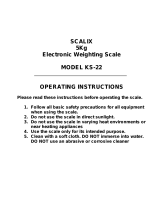 SCALIX KS-22 Operating instructions
SCALIX KS-22 Operating instructions
-
Hardy HIBSD User manual
-
 LOUIS TELLIER 208065 User manual
LOUIS TELLIER 208065 User manual
-
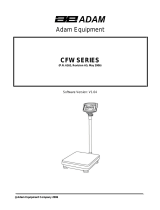 Adams CFW 150 User manual
Adams CFW 150 User manual
-
Global 240878 User manual
-
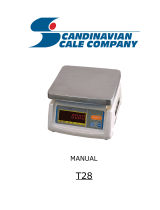 Scandinavian Scale Company T28 User manual
Scandinavian Scale Company T28 User manual
-
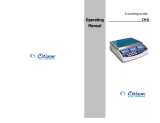 Citizon CKG Operating Manua
Citizon CKG Operating Manua
-
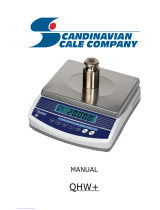 Scandinavian Scale Company QHW+ 3 User manual
Scandinavian Scale Company QHW+ 3 User manual
-
Hobart HBR302-1 Scale Owner's manual
-
Baxtran BW User manual

































